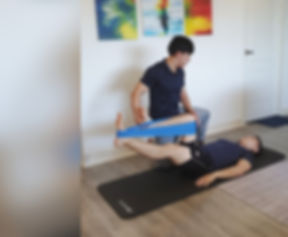American College of Sports Medicine(ACSM)'s Updated Exercise's Preparticipation Screening
- Gan Jing Tap
- May 9, 2023
- 2 min read
Updated: May 29, 2024
Risk classification became a best practice for exercise preparticipation screening and has been used broadly to determine who is safe to start exercising and who needs to seek medical clearance. However, as public health efforts encouraging regular physical activity have increased over the past few decades, there has been an associated effort to identify barriers keeping people from starting exercise. One area thought to be a substantial limiting factor in these efforts to increase physical activity (PA) participation was an over-prescription for medical clearance prior to participation.
In 2014, Whitfield and colleagues published a paper using a long-recommended preparticipation health screening checklist. Based on their findings, they concluded that nearly 95 percent of men and women older than 40 years of age would be directed to consult a physician before engaging in any form of exercise. This practice likely leads to a needless referral to a health care provider, thereby creating a burden to an individual who wants to begin exercise -- even something as simple as walking.
Consequently, ACSM convened a scientific round table in June of 2015 to evaluate, refine and define its exercise preparticipation health screening procedures; the updated recommendations of this expert panel were published. For a determination about whether medical referral is recommended or not, these new screening guidelines rely on the following:
current exercise participation
history and symptoms of cardiovascular, metabolic or renal disease
the desired exercise intensity for the person who wants to initiate a PA program
The purpose of the paper was to compare the referral proportion of the new ACSM algorithm to that of previous screening tools in the same representative sample of US adults used in the original Whitfield et al. paper (NHANES data). The results demonstrated that the number of individuals who would be referred to a physician before beginning exercise was decreased by approximately 41 percent. This finding suggests that the new prescreening procedures have achieved the intended outcome - decreasing the barriers to PA participation by decreasing the number of individuals who require medical clearance prior to engagement.
Perform the free screening via this link.
